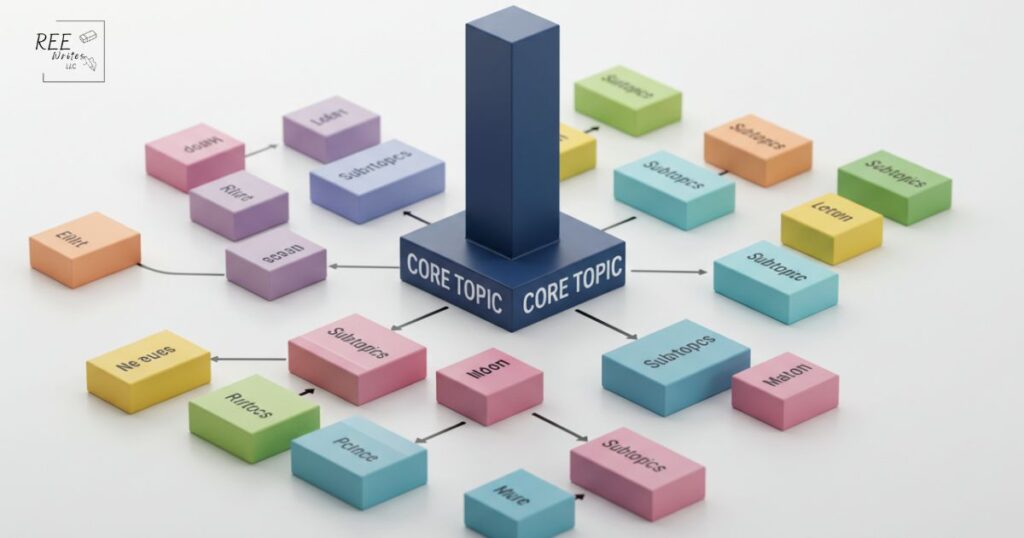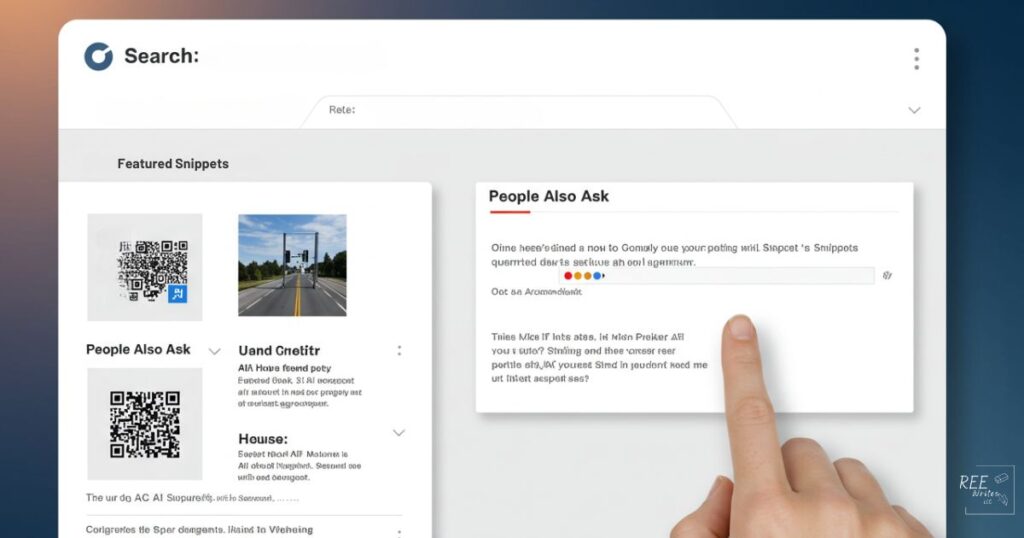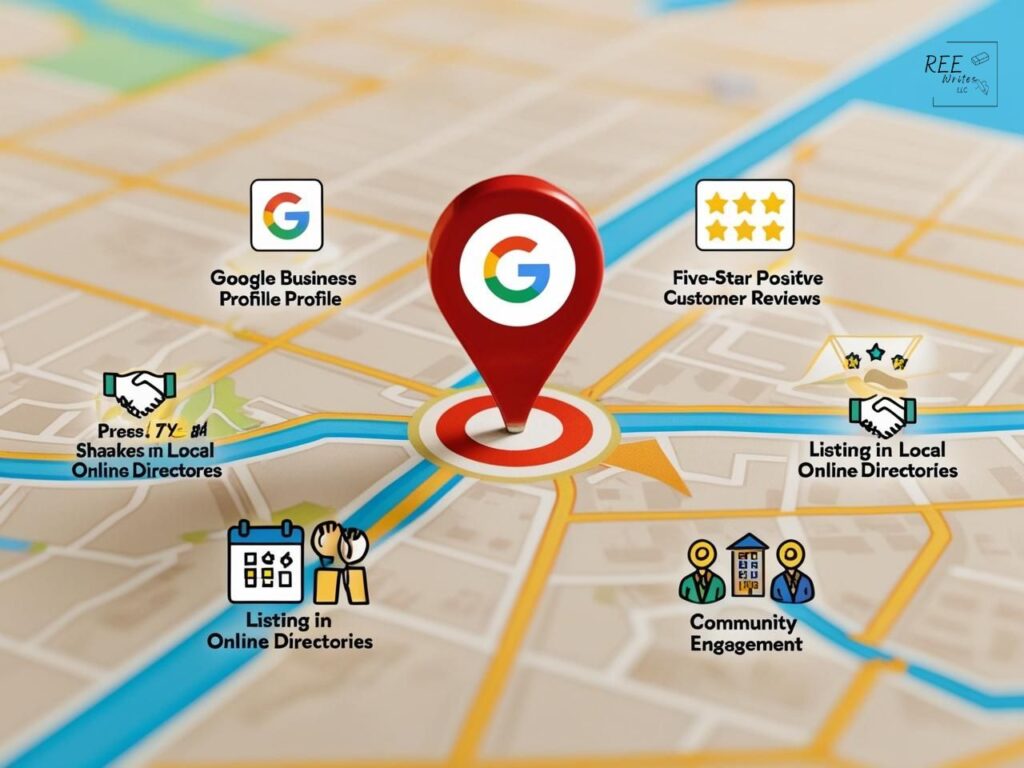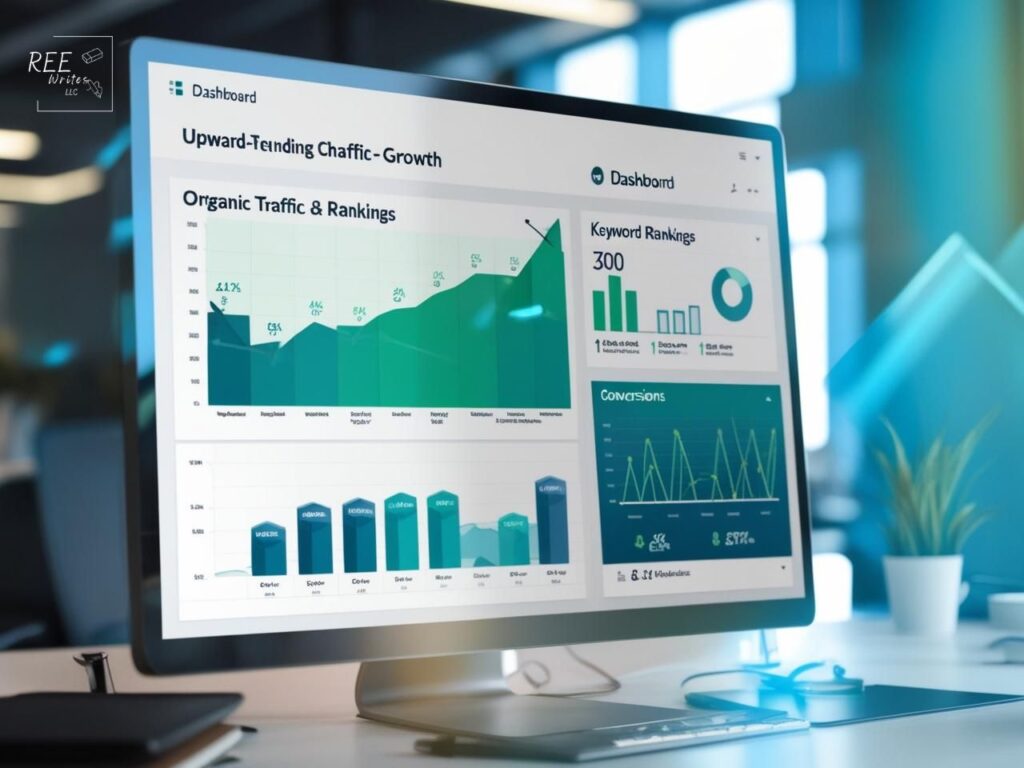SEO Optimization for Solopreneurs: Boost Your Website Visibility
Although 68% of online experiences begin with a search engine, many solopreneur and small businesses without a marketing department or a big budget struggle to get their websites ranked on the first page of search results. “The best place to hide a dead body is page two of Google,” goes the digital marketing joke that rings true for many solopreneurs trying to improve their website’s SEO.
This guide will walk you through practical, actionable SEO strategies to boost your website visibility specifically designed for busy solopreneurs.
Contents
- On-Page SEO Fundamentals
- Keyword research techniques tailored for solopreneurs with limited time
- Essential on-page elements to optimize
- Content structure best practices that both search engines and readers love
- Image optimization to improve page load speed and accessibility
- Internal linking strategies to strengthen your site architecture
- Technical SEO For Non-Technical Solopreneurs
- Content Strategy That Drives Traffic
- AI's Impact on Modern SEO
- How Google's AI-powered search is changing traditional SEO rules
- Using AI tools to create SEO-friendly content
- Perplexity and other AI search engines: preparing your content for AI discovery
- What the integration of Reddit results in Google search means for your strategy
- Adapting to search intent in an AI-first search landscape
- Local SEO For Solopreneurs
- Link Building On A Solopreneur's Schedule
- Measuring SEO Success
On-Page SEO Fundamentals
On-page SEO forms the foundation of your website’s visibility in search engines. You have direct control over these elements and can optimize without specialized technical knowledge.
Keyword research techniques tailored for solopreneurs with limited time

Finding the right keywords doesn’t have to be time-consuming or complicated. For solopreneurs, focusing on keyword difficulty rather than search volume often yields better results. According to Semrush, “Keyword difficulty is more important than volume” for small businesses looking to gain traction.
Start by identifying questions your target audience is asking. What problems do they need solved? Use free tools like Google’s Keyword Planner or affordable options like Mangools to identify low-competition, long-tail keywords relevant to your business.
When selecting keywords, prioritize phrases with:
- Lower difficulty scores (under 40)
- Clear relevance to your products or services
- Specific intent that matches what you offer
For example, if you run a handmade pottery business, targeting “handcrafted ceramic pots” will bring more qualified traffic than a broader, more general keyword like “pottery.”
Essential on-page elements to optimize

Once you’ve identified your target keywords, incorporate them strategically into these critical on-page elements:
- Title tags: Include your primary keyword near the beginning of your title. Keep titles under 60 characters to ensure they display fully in search results.
- Meta descriptions: While not a direct ranking factor, compelling meta descriptions improve click-through rates. Include your keyword naturally and create a clear call to action within 155 characters.
- Header tags: Structure your content with H1, H2, and H3 tags that include relevant keywords. Your H1 should contain your primary keyword, while subheadings can target related terms.
Backlinko found that pages with the exact keyword in their title tag ranked 1.5 positions higher than those without it, demonstrating the continued importance of these basic on-page elements.
Content structure best practices that both search engines and readers love

Well-structured content keeps readers engaged and helps search engines understand your page. Follow these guidelines:
- Start with a clear, keyword-rich headline
- Use subheadings (H2s and H3s) to organize information logically
- Keep paragraphs short (2-3 sentences) for better readability
- Include bulleted or numbered lists to break up text
- Bold important concepts or keywords (sparingly)
“SEO isn’t about gaming the system anymore; it’s about learning how to play by the rules,” notes content strategist Jordan Teicher. This means creating genuinely helpful content that’s structured in a way that both readers and search engines can easily digest.
Image optimization to improve page load speed and accessibility

Images significantly impact both your site’s load time and accessibility. Optimize them by:
- Compressing all images before uploading
- Using descriptive, keyword-rich file names (e.g., “handmade-ceramic-bowl.jpg” instead of “IMG12345.jpg”)
- Adding alt text that describes the image while naturally incorporating keywords
- Choosing the appropriate file format (JPEG for photographs, PNG for graphics with transparency)
Research shows that 40% of users abandon websites that take more than 3 seconds to load, making image optimization crucial for both SEO and user experience.
Internal linking strategies to strengthen your site architecture

Internal links create pathways for both users and search engine crawlers to discover more of your content. A strategic approach includes:
- Linking from high-authority pages to important content you want to rank
- Using descriptive anchor text that includes relevant keywords
- Creating a logical hierarchy with your most important pages no more than 3 clicks from your homepage
- Regularly auditing and updating internal links as you add new content
Internal links tell Google which pages are most important on your site and help distribute “link equity” throughout your website.
Technical SEO For Non-Technical Solopreneurs

Don’t let the term “technical SEO” intimidate you. Even without coding skills, you can implement these critical technical optimizations.
Page speed optimization without needing to code

Page speed directly impacts both rankings and user experience. Improve yours with these non-technical approaches:
- Install a caching plugin if you’re using WordPress
- Optimize and compress images as mentioned earlier
- Choose a lightweight, performance-focused theme or template
- Remove unnecessary plugins or scripts
- Consider a content delivery network (CDN) service
Mobile optimization essentials
With Google’s mobile-first indexing, how your site performs on mobile devices now determines your rankings. Key considerations include:
- Using responsive design that adapts to any screen size
- Ensuring buttons and links are large enough to tap easily
- Checking that text is readable without zooming
- Testing your site on multiple devices and browsers
Mobile traffic now accounts for over half of all web traffic, making mobile optimization non-negotiable for business success.
Implement schema markup using simple plugins

Schema markup helps search engines understand your content better, potentially improving how your site appears in search results. For non-technical users:
- Install a schema markup plugin (like Yoast SEO or All-in-One SEO for WordPress)
- Configure basic business information (name, address, phone)
- Set up product, service, or review schema as appropriate for your business
Websites using schema markup typically rank four positions higher in search results than those without it.
Secure your website with HTTPS

HTTPS is both a ranking signal and a trust factor for visitors. Most hosting companies now offer free SSL certificates through Let’s Encrypt. Make sure:
- Your site uses HTTPS across all pages
- All internal links use HTTPS
- Old HTTP URLs redirect properly to their HTTPS versions
Google Chrome marks non-HTTPS sites as “Not Secure,” which can significantly increase bounce rates and reduce conversions.
Submit sitemap to search engines

Sitemaps help search engines discover and index your content more efficiently. To implement:
- Use a plugin like Yoast SEO or Google XML Sitemaps to automatically generate a sitemap
- Create accounts in Google Search Console and Bing Webmaster Tools
- Submit your sitemap URL to both platforms
- Check periodically for any indexing errors
A well-structured sitemap ensures search engines can find and index all your important pages, including new content you publish.
Content Strategy That Drives Traffic

Content remains the cornerstone of effective SEO. Creating strategic content that serves both users and search engines is essential for sustained growth.
Create content that serves both your audience and search engines

The most effective content satisfies both human readers and search algorithms. To achieve this balance:
- Start with real questions and problems your audience faces
- Provide comprehensive, actionable answers
- Include relevant keywords naturally throughout your content
- Support claims with data, examples, or case studies
- Make content scannable with clear subheadings and formatting
“Quality content about a topic” is the first criterion for ranking high in organic search, emphasizing that content quality trumps all other factors.
Establish content pillars relevant to your business

Content pillars are comprehensive resources addressing core topics in your niche. They help establish your authority and create a foundation for your content strategy:
- Identify 3 to 5 main topics central to your business
- Create in-depth, authoritative content (2,000+ words) for each pillar
- Develop related subtopic content that links back to your pillar pages
- Update pillar content regularly to maintain relevance
This approach not only strengthens your topical authority but also creates a logical site structure that search engines reward. Research shows that content between 2,000 to 2,500 words tends to rank higher in search results.
Repurposing strategies to maximize your content

As a solopreneur, maximizing every piece of content is essential. Effective repurposing includes:
- Turning blog posts into video tutorials
- Creating infographics from data-heavy articles
- Extracting key points for social media posts
- Compiling related articles into downloadable guides
- Converting written content into podcast episodes
This approach can triple your content output without requiring three times the effort, making it ideal for time-strapped solopreneurs.
Updating older content to maintain relevance and rankings

Content isn’t “set it and forget it.” Regular updates help maintain and improve rankings:
- Audit content performance quarterly using Google Analytics
- Prioritize updating high-traffic or previously high-ranking pages
- Add new information, examples, or data points
- Refresh outdated statistics or references
- Improve formatting and readability
Update your content every year to keep it fresh and relevant.
Publishing frequency recommendations based on your resources

Consistency matters more than volume. Based on your available time:
- 1 to 2 hours per week: Publish one high-quality post monthly
- 3 to 5 hours week: Aim for bi-weekly content
- 6 hours week or more: Consider weekly publishing
“Would you rather spend 5 hours on a post that could get you thousands of hits per month over 2 years?” suggests one SEO professional, highlighting that quality and strategic targeting outweigh quantity.
AI’s Impact on Modern SEO

Artificial intelligence is reshaping SEO practices. Understanding these changes helps you adapt your strategy effectively.
How Google’s AI-powered search is changing traditional SEO rules

Google’s AI systems like BERT and MUM have transformed how search works:
- Focus has shifted from exact keyword matching to understanding user intent
- Content depth and expertise matter more than keyword density
- Natural language processing better understands conversational queries
- Featured snippets and knowledge panels answer questions directly in search results
These changes mean your content needs to provide genuine value rather than just targeting keywords. Studies show that comprehensive content that answers related questions often ranks better than content optimized for a single keyword.
Using AI tools to create SEO-friendly content

AI can help solopreneurs create better content more efficiently:
- Use AI tools for initial research and topic exploration
- Generate content outlines to ensure comprehensive coverage
- Identify gaps in competitor content you can fill
- Check content readability and SEO optimization
However, remember that “Google prioritizes quality, human-written content over AI-generated or keyword-stuffed content.” Use AI as a tool, not a replacement for your expertise and unique perspective.
Perplexity and other AI search engines: preparing your content for AI discovery

According to SEOMATOR, marketers are leveraging AI in their SEO strategy with great results:
- 86.07% of SEO professionals have integrated AI into their strategy.
- Companies leveraging AI in their SEO strategies saw a 30% improvement in search engine rankings within six months.
As AI search engines gain popularity, optimizing for them requires:
- Structuring content with clear headers that frame specific questions
- Providing direct, concise answers early in each section
- Including relevant data points, statistics, and citations
- Using schema markup to help AI understand your content’s context
While these engines are still evolving, content that’s well-structured and information-rich tends to perform best across all platforms.
What the integration of Reddit results in Google search means for your strategy
Google’s increasing inclusion of Reddit content signals a preference for authentic discussion:
- Consider participating in relevant Reddit communities to build visibility
- Create content that addresses real questions found in Reddit discussions
- Incorporate conversational elements and authentic perspectives in your content
- Use Reddit as a research tool to identify emerging topics in your niche
This trend underscores the value of genuine expertise and community engagement over traditionally optimized content.

Adapting to search intent in an AI-first search landscape
Search intent (the “why” behind a search query) is now central to SEO success:
- Identify whether queries are informational, navigational, commercial, or transactional
- Match your content format to the appropriate intent (guides for informational, product pages for commercial)
- Analyze what’s currently ranking to understand what Google considers relevant
- Structure content to directly address the specific questions behind search queries
A Semrush study found that content matching search intent outperforms content that only contains target keywords, even when those keywords appear less frequently.
Local SEO For Solopreneurs
For businesses serving specific geographic areas, local SEO presents unique opportunities for visibility.
Set Up and Optimize Your Google Business Profile

Your Google Business Profile is the cornerstone of local visibility:
- Claim and verify your business listing.
- Complete every section of your profile.
- Choose the most specific category for your business.
- Add high-quality photos updated regularly.
- Maintain accurate business hours and contact information.
Businesses with complete Google Business Profiles receive 7x more clicks than incomplete listings and are 70% more likely to attract location visits.
Build local citations consistently across the web

Citations (mentions of your business name, address, and phone number) build local authority:
- Ensure NAP (Name, Address, Phone) consistency across all platforms
- Start with major directories like Yelp, Yellow Pages, and Bing Places
- Target industry-specific directories relevant to your business
- Consider using a citation management tool to maintain consistency
Research shows that citation consistency ranks as the fourth most important factor in local search ranking, making it a high-priority task for local businesses.
Generating authentic customer reviews ethically
Reviews directly impact both rankings and customer decisions:
- Create a simple process for customers to leave reviews
- Send follow-up emails with direct links to your review platforms
- Respond thoughtfully to all reviews, positive and negative
- Never incentivize or purchase fake reviews
Businesses with a 3- to 5-star rating on Google reviews get 25% to 39% more clicks than those with fewer reviews, according to a BrightLocal study.
Local keyword optimization strategies
Local keyword optimization requires a slightly different approach:
- Include city/region names in title tags, headers, and content
- Target neighborhood terms for businesses in large cities
- Create location-specific pages for businesses serving multiple areas
- Optimize for “near me” searches by including proximity terms
Local search has grown by more than 900% in recent years, with 46% of all Google searches having local intent, making local keyword optimization essential for area-based businesses.
Leveraging local events and community for better visibility

Community involvement creates both backlink opportunities and local relevance. Some ideas include:
- Sponsor local events or sports teams
- Host workshops or educational sessions
- Partner with complementary local businesses
- Participate in community service and charity events
These activities create natural opportunities for local press coverage, mentions, and backlinks that boost your local SEO profile.
Link Building On A Solopreneur’s Schedule
Backlinks remain crucial for SEO success, but traditional link building can be time-consuming. These strategies work with limited resources.

Guest posting opportunities that provide actual value
Quality guest posts can build authority and referral traffic:
- Target sites that reach your ideal audience, not just high-domain-authority sites
- Pitch unique insights based on your specific expertise
- Create original, valuable content that serves the host site’s audience
- Include a natural contextual link back to relevant content on your site
Guest posting remains effective when approached with quality in mind — a study by Aira found that 47% of marketers still consider it one of their top link building strategies.
Creating linkable assets with minimal resources
Certain content types naturally attract links without ongoing outreach:
- Original research or data from your business experiences
- Comprehensive guides that solve specific problems
- Visual assets like infographics or explanatory diagrams
- Free tools or templates related to your industry
Content with unique visual elements like diagrams and charts attract higher engagement than text-only content.
Building relationships with complementary businesses
Network with businesses that serve your same audience but aren’t direct competitors. You can:
- Cross-promote content on each other’s blogs
- Develop co-branded resources or tools
- Participate in joint webinars or events
- Mention and link to each other when relevant
This collaborative approach creates mutual benefits, and require less time than a cold outreach campaign.
Leveraging social media for link building

While social media links are typically nofollow, they can lead to valuable linking opportunities:
- Share your best content consistently across platforms
- Join and participate in industry-specific groups
- Connect with journalists and content creators in your field
- Use social listening tools to find linking opportunities
A study by Hootsuite found that content shared on social media receives, on average, 40% more backlinks than content without social promotion.
How to monitor your backlink profile efficiently
Stay informed about your backlink status without daily monitoring:
- Set up Google Search Console to receive alerts about new links
- Schedule monthly backlink audits using free tools like Ahrefs’ Backlink Checker
- Create Google Alerts for your brand name to catch unlinked mentions
- Focus primarily on link quality metrics rather than quantity
Quality matters more than quantity. Research shows that a few links from authoritative, relevant sites outperform many low-quality links.
Measuring SEO Success
Effective measurement helps you understand what’s working and where to focus your limited time.

Essential metrics every solopreneur should track
Focus on metrics that directly impact your business goals:
- Organic traffic growth: Month-over-month and year-over-year changes
- Conversion rate from organic search: How many visitors take desired actions
- Keyword rankings: For your top 10-15 target terms
- Page performance: Which pages attract the most traffic and conversions
- Bounce rate and time on page: Indicators of content quality
Setting up basic analytics without getting overwhelmed
Start with a simple analytics setup:
- Install Google Analytics 4 on your website
- Connect Google Search Console to your Analytics
- Set up basic goal tracking for important actions
- Create a custom dashboard with only your most important metrics
- Schedule monthly review sessions to assess performance
This approach provides essential insights without requiring daily monitoring. Solopreneurs who review their analytics for just 1 to 2 hours a month make better strategic decisions than those who check stats daily but never deeply analyze them.
Interpreting your data to guide future decisions

Turn analytics into actionable insights:
- Identify your highest-performing content and create more similar material
- Find pages with high impressions but low click-through rates and improve their titles/descriptions
- Spot keywords where you rank on page two and target them for improvement
- Analyze user behavior to identify potential website improvements
Data-driven decisions consistently outperform gut feelings. A study by McKinsey found that organizations that leverage customer insights outperform peers by 85% in sales growth.
Tools that simplify SEO monitoring for busy individuals

Many free tools and resources to help you do your own on-page SEO, technical SEO, and content generation:
- Google Search Console: Free and essential for basic SEO monitoring
- Bing Webmaster Tools: Provides insights for Bing/Yahoo traffic
- SEMrush or Ahrefs (free plans): For basic keyword and competitor research
- Screaming Frog SEO Spider (free version): For technical site audits
- Ubersuggest: Affordable all-in-one SEO tool with free options
Creating a simple SEO reporting system for yourself

Establish a sustainable reporting process:
- Create a simple spreadsheet tracking key metrics monthly
- Document actions taken and their results
- Set quarterly SEO goals based on your data
- Prioritize tasks that deliver the highest ROI
- Schedule regular review sessions to maintain focus
This system helps maintain consistency and measure progress over time. Research indicates that businesses with documented SEO strategies are 313% more likely to report success than those without structured plans.
Effective SEO for solopreneurs isn’t about implementing every possible tactic—it’s about choosing the right strategies that align with your business goals and available resources. Start with the fundamentals, gradually implement more advanced techniques, and measure your results over time to refine your approach.
SEO is a marathon, not a sprint. With consistent effort and the strategies we’ve discussed here, you’ll steadily improve your website’s visibility and connect with more potential customers online.
References
2022 Trend Report on Marketing Strategy. CoSchedule. Retrieved from https://coschedule.com/marketing-statistics
6 Types of Content That Attract Backlinks. Digital SEO Land. Retrieved from https://digitalseoland.com/blog/linkable-content-types-that-attracts-backlinks/
Bonelli, S. (2017). Impact of Reviews and Ratings on Search Click-Through Rates. Retrieved from https://www.brightlocal.com/research/review-search-click-through-study/
Cheefoo. (2024). SEO for Solopreneurs: Ultimate Guide to Online Success. Leapmesh. Retrieved from https://leapmesh.com/seo-for-solopreneurs
Clem, A. Optimize Your Mobile Experience. (2021). Think with Google.
Collins, S. (2024). What is Keyword Difficulty? (& How to Measure It). Semrush. Retrieved from https://www.semrush.com/blog/keyword-difficulty/
Dean, B. (2025). Blog SEO. Blacklinko. Retrieved from https://backlinko.com/hub/content/blog-seo
Edwards, I. 20 Fundamental AI SEO Statistics for 2025. (2025). SEOMATOR. Retrieved from https://seomator.com/blog/ai-seo-statistics
Hughes, D. (2023). Move Up the SERPs with Schema Markup. Website Magazine. Retrieved from https://www.websitemagazine.com/seo/move-up-the-serps-with-schema-markup
Kalvo, J. How Information Can Give Companies a Competitive Advantage. Forbes. Retrieved from https://www.forbes.com/councils/forbestechcouncil/2025/04/24/how-information-can-give-companies-a-competitive-advantage/
Kirkpatrick, D. (2016). Google: 53% of mobile users abandon sites that take over 3 seconds to load. Marketing Dive.
Link Building Techniques & Tools (2022). Aira. Retrieved from https://aira.net/state-of-link-building/link-building-techniques-and-tools/
Nayak, P. (2021). MUM: A new AI milestone for understanding information. Retrieved from https://blog.google/products/search/introducing-mum/
Nicholson, R. How to Create an SEO Strategy [Template Included]. Retrieved from https://blog.hubspot.com/marketing/seo-strategy
Rowe, K. (2024). How Google Search Uses AI. Search Engine Land. Retrieved from https://searchengineland.com/how-google-search-uses-ai-446639
Silva, C. (2024). What is Search Intent? How to Identify It & Optimize for It. Semrush. Retrieved from https://www.semrush.com/blog/search-intent/
Treadway, C. J. (2023). Top 23 Google Business Profile Statistics and Facts. Cube Creative. Retrieved from https://cubecreative.design/blog/small-business-marketing/google-business-profile-statistics-and-facts
SEO

